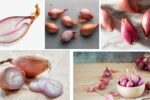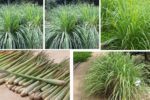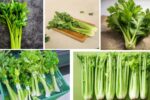Chives, the slender green herb known for its mild onion flavor and versatile use in global cuisines, have carved out a prominent place in both home kitchens and large-scale agricultural markets. As interest in fresh and organic herbs continues to rise, understanding which country leads the world in chive production becomes essential from both culinary and economic standpoints. This article explores in detail the world’s largest chive producer, providing insights into global cultivation patterns, climate advantages, export markets, and the future of chive agriculture.
Introduction to Chives

Chives (Allium schoenoprasum) are a perennial herb belonging to the onion family, native to Europe, Asia, and North America. They are cultivated primarily for their hollow, cylindrical leaves, which are used as a flavoring herb. Beyond their culinary appeal, chives also offer health benefits, including antibacterial properties and high levels of vitamins A and C.
Chives thrive in temperate climates and are often grown in herb gardens, greenhouses, and open fields. Their ease of cultivation and short harvest cycles make them a favored crop among herb farmers.
Global Production Overview

Herb production has seen a steady increase worldwide due to the growth of the health food industry and the popularity of global cuisine. Among the commonly grown herbs—such as basil, parsley, rosemary, and thyme—chives are particularly notable for their demand in the food processing industry, restaurants, and fresh produce markets.
Countries like the United States, China, India, and several European nations are significant contributors to global chive production. However, one country stands out as the clear leader in this space.
China: The Largest Chive Producer in the World

1. Dominant Production Volume
China is by far the largest producer of chives in the world. With its vast agricultural land, highly organized farming systems, and favorable climate, China has cultivated a robust herb industry that supplies both domestic and international markets. The country produces thousands of tons of fresh chives annually, accounting for an estimated over 50% of global chive production.
2. Key Growing Regions in China
Chive cultivation in China is concentrated in provinces like Shandong, Henan, Hebei, and Sichuan. These areas benefit from a temperate climate, well-drained fertile soils, and consistent rainfall—conditions ideal for growing chives.
In Shandong Province, in particular, greenhouses and high-tech farming systems have been implemented to produce chives year-round, significantly increasing yield per hectare.
3. Cultivation Practices
Chinese farmers have adopted efficient cultivation techniques including:
- Greenhouse and tunnel farming for off-season production.
- Use of organic fertilizers and drip irrigation to boost quality.
- Multi-harvest cycles that allow up to 4–5 cuts annually.
This efficient use of land and resources has helped China lead in both quantity and consistency of chive supply.
Export Market and Economic Impact

China’s chive industry doesn’t only cater to local demand—it also serves an extensive export network. Major buyers of Chinese chives include:
- Japan
- South Korea
- The United States
- Germany
- Canada
Chives are often exported both fresh and frozen, and are increasingly found in packaged form for supermarkets and foodservice providers.
China’s dominance in the chive market contributes significantly to its agricultural GDP, particularly within the horticultural segment. The herb farming sector also provides employment to tens of thousands of small and medium-scale farmers.
Why China Leads the Chive Industry

1. Climate Advantage
China’s diverse climatic regions allow year-round cultivation. In northern provinces, chives are grown outdoors in spring and summer, while in the south, production continues through winter in protected environments.
2. Government Support
The Chinese government actively supports herb cultivation through:
- Agricultural subsidies.
- Rural development initiatives.
- Training programs for farmers.
This has boosted both productivity and exports in the herb sector.
3. Large Domestic Market
China’s own food culture includes heavy use of herbs like chives in dumplings, stir-fries, pancakes, and soups. The domestic demand complements the export market, ensuring a steady flow of revenue and resilience against market shocks.
Comparison with Other Leading Producers
1. India
India is a strong contender in the herb production sector but focuses more on coriander, mint, and basil. Chive cultivation in India remains relatively small-scale and is often for local consumption rather than large-scale export.
2. United States
The U.S. produces a significant amount of chives, particularly in California and the Pacific Northwest. However, the scale is smaller compared to China. Much of the U.S. chive supply is used domestically, particularly by the processed food and restaurant industries.
3. European Union
Countries like France, the Netherlands, and Germany cultivate chives as part of their broader herb agriculture. EU producers are known for high quality and organic standards, but high labor costs and limited land space reduce competitiveness compared to China.
Future Trends and Sustainability in Chive Production
1. Organic and Sustainable Practices
As consumer demand for organic products increases, Chinese producers are slowly transitioning to sustainable growing practices. Certifications for organic chives are becoming more common, particularly for export to Western countries.
2. Technological Innovation
Vertical farming, hydroponics, and precision agriculture tools are starting to shape the future of herb farming in China. These innovations are expected to increase yield, reduce water usage, and maintain consistent quality.
3. Export Growth
With global demand for herbs expected to rise, China’s chive exports are projected to grow steadily. The country is investing in cold-chain logistics and international trade partnerships to support this expansion.
Conclusion
China’s dominance in chive production is the result of strategic investments in agriculture, favorable environmental conditions, and a strong domestic and export market. As the world’s largest chive producer, China not only leads in volume but also in innovation and supply chain efficiency.
The rise of herb-based diets, plant-based cuisine, and the global wellness movement ensures that chives will continue to be a high-demand crop. With its established infrastructure and forward-looking strategies, China is well-positioned to maintain and expand its lead in global chive production for years to come.




Leave A Comment